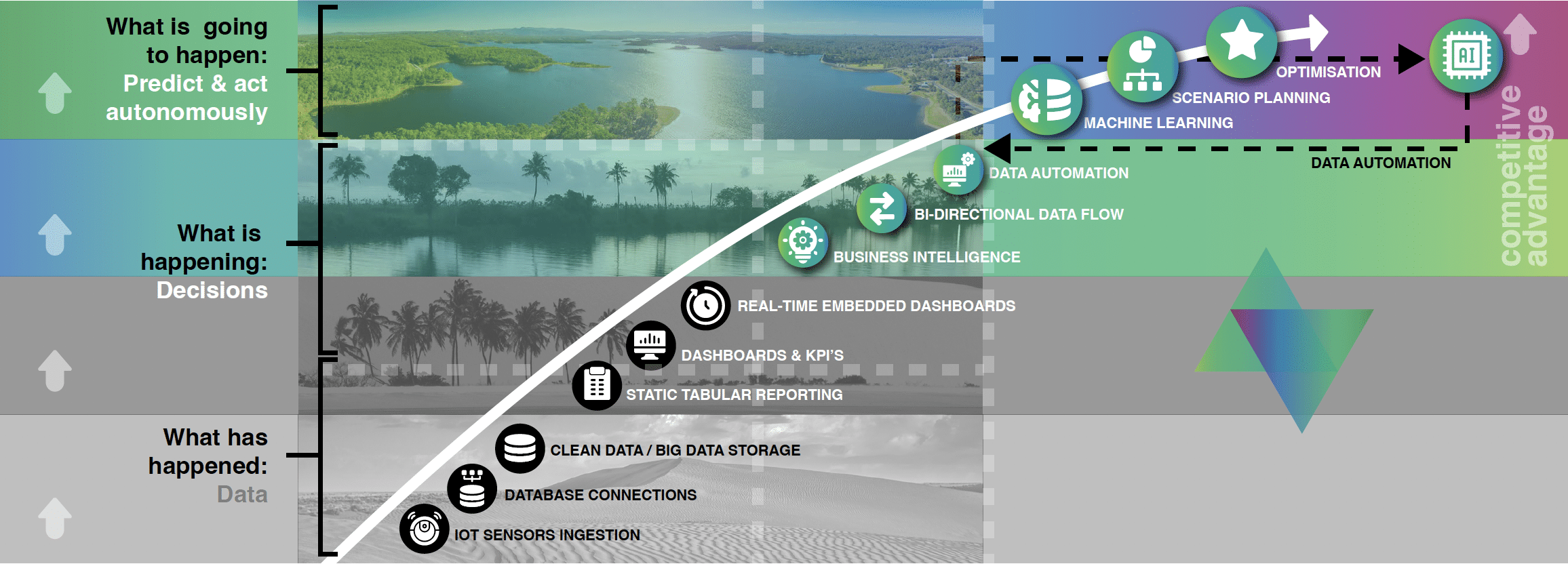
As the CEO of an innovative data analytics software company, I often encounter a common misconception with business leaders: the confusion between artificial intelligence (AI) and machine learning (ML).
When I first encountered the terms, I personally used them loosely and at that stage did not truly understand the differences. But over the years I have found that using the right terminology is important for leaders to convey a conscience vision and strategy aligned to concepts that are and will disrupt their organisations.
This article is designed to be those crib notes for leaders to discern between fact and hype.
What is AI and what is it not?
As a starting point, we need to understand that AI is a broader concept that encompasses ML and other predictive analytics and data science techniques, while ML, as a subset of AI, focuses on algorithms and models to enable machines to learn from data.
The most common ML terms used are regression, classification, clustering, anomaly detection, and deep learning, to name a few.
We must also remember that it has not magically appeared, it has been around for over seventy years. What has accelerated AI and ML adoption is the access to infrastructure and computing power over the modern web and cloud.
What Blurred Lines?
As Information Technology (IT) has evolved over the past four decades, we as leaders have seen many technologies that have gone from bleeding edge to leading edge, to mainstream adoption. In my opinion, this is what is happening with AI.
Remember the days when we had hundreds of physical servers in expensive data centers, and each server needed to be acquired to cater for three to five years of application growth? Looking back does it not seem ridiculous now? At the time these servers had changed how our businesses ran from old archaic rigid mainframes to modern agile functional applications.
The media and AI evangelists have been painting a picture of effortless and human-intuitive intelligence that will change our world. And, I am sure this is the future and probably closer than we think, however, in this bleeding or leading edge stage of the AI hype cycle, we must know what truth from hype.
When friends and acquaintances know that your business is playing in the AI game, the first use case is to beat the stock market and make a quick buck, (tried that and lost a fair share of money) as the problem is far more complex. Factors such as macroeconomics, microeconomics, sentiment, and manipulation have an impact on the global finance market. It is almost impossible to take all of these factors into account or access all the relevant information. However, in the world of your business, you have defined data that is generated and can be accessed to take you down this AI journey.
As a business leader, you might think that taking AI and applying it to every situation is the right thing to do, but this is not the case, this will only dilute your efforts. AI and Machine Learning will and should be part of a strategic plan for your present and future activities, however, it needs to be targeted and intentional for the purpose it was created…
The Real Value of ML and AI
How I explain the difference between AI and ML is to use ML as the tools or components of AI. AI includes the finding, cleaning, and preparing of the data from one or various sources. Then, applying the various ML algorithms in simple or complex methods to interact with the data, make predictions or decisions. These outcomes then need to be applied to the real world in a practical way. For example, this could be informing someone to act or switching on a water pump automatically, for example.
Typically the real value and impact of ML and AI are in repetitive and mundane tasks or high-volume applications. This is where the focus should be for a start. In some areas, we have found that organisations have flourished.
Real-time business decisions, taking what the organisation has learned from “the customer data journey” (Data Visualisation and Business Intelligence) and using vast amounts of data to find those nuggets of information to make impactful decisions. Combination of the volume of data with predictive analytics. Knowing that your decisions are substantiated by fact.
Customer health or churn modeling. Using data to find the characteristics of what makes a happy and satisfied customer versus a customer that is about to move to a competitor. This is especially true for organisations that have many customers that transact on a regular basis. Behavior of
Market research and customer segmentation. This is a great way to determine how one’s brand is tracking in the marketplace.
Internal efficiencies, using the Pareto principle (also known as the 80/20 rule) to find where your organisation is not operating effectively. I have heard this so many times, “This is how we have always operated, and it works, why change what works?”. Truth within your business; there are countless day-to-day operations that need to be visited with a data eye. When you see the inefficiencies through the data your business will never be the same.
Real-time chatbot agents, using technology to speed up customer engagements. However if not implemented correctly can be disastrous.
Using data as a proxy for reality, terms like digital twin and scenario planning are the terminology used. However, we have found that this can be hugely beneficial for all types of industries. As a business owner, the term constraints is a very real part of planning for expensive resource utilisation, and balancing where these resources are used can be tricky. However, by using AI, you have the ability to fine-tune the various levers to get optimal usage for maximum efficiency and profitability.
Debating what AI is or is not, detracts from the ways in which a business owner can transform their business.
Conclusion
Let’s not kid ourselves, AI and ML are here to stay! If you are hoping that it will go away and your current operating methods will stay the same for the next few decades. I have some bad news for you, your competitors will take your lunch.
Don’t get caught up by media hype, AI has a substantial and strategic place in your organization. But one needs to approach the technology in the same way a business has functional areas such as Human Resources, Information technology, Operations, etc… Have a short, medium, and long-term strategic plan in the areas that can most benefit.
Uninformed people will make the statement “We want 50% of our business AI’ed”. This type of thinking is not properly thought out and WILL put your teams in a tailspin. Find the true opportunities within your business that can benefit. As a start, the problem is normally where you keep on throwing resources to solve the problem, this is where AI can make all the difference.

If you’re curious about implementing AI and ML in your business, reach out to The Data Insights People.
Share: